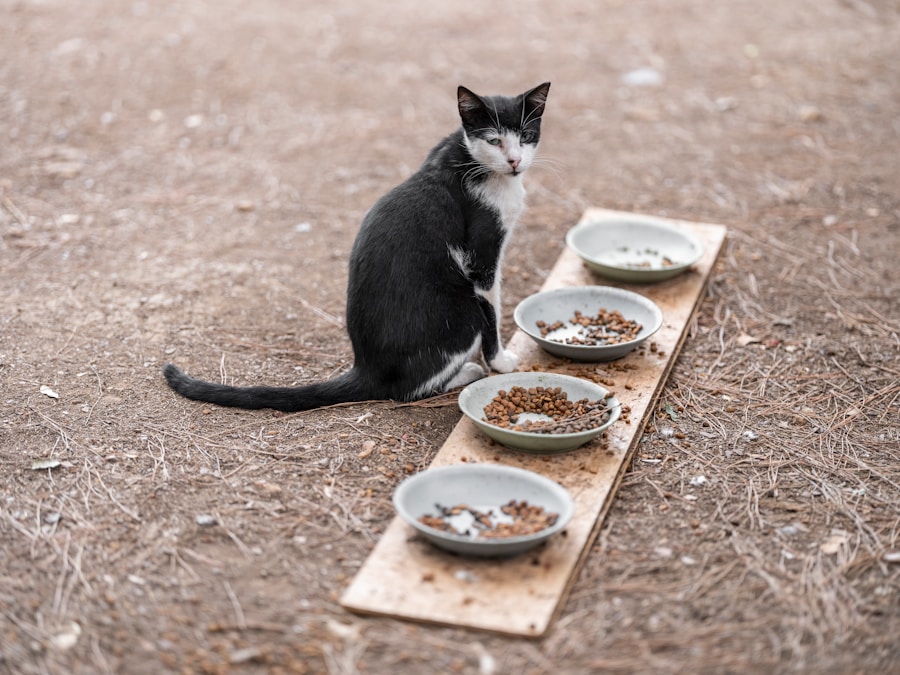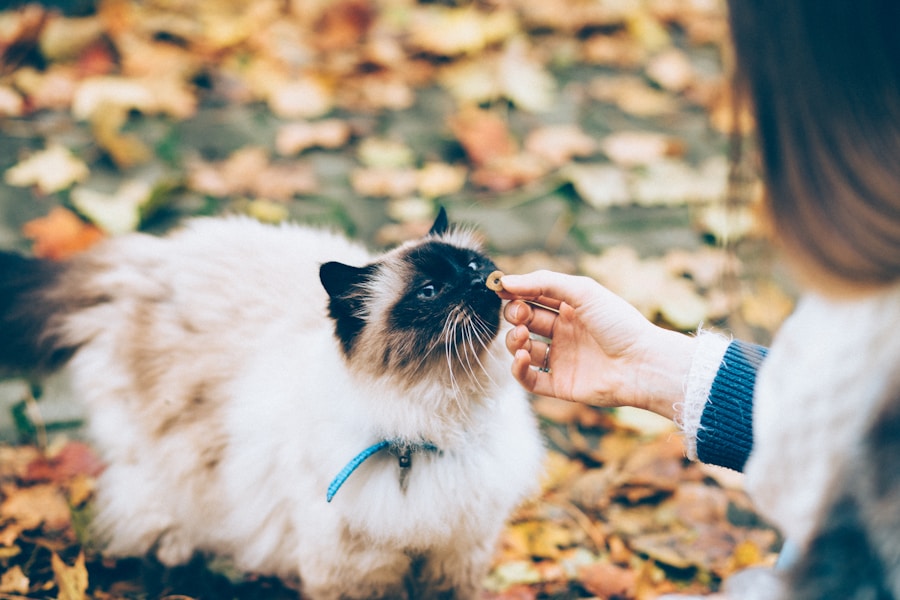Cats, like all animals, have basic needs that must be met in order for them to live happy and healthy lives. Understanding these needs is crucial for any cat owner. Firstly, cats need a safe and secure environment where they can feel comfortable and relaxed. This means providing them with a cozy bed, a scratching post, and plenty of hiding spots. Cats also need access to fresh water at all times, as well as a balanced diet that meets their nutritional needs. Additionally, cats are natural hunters and need mental and physical stimulation to keep them happy. This can be achieved through interactive play, puzzle toys, and access to the outdoors if it is safe to do so.
In addition to these basic needs, cats also require social interaction and companionship. While some cats may be more independent than others, they still benefit from regular interaction with their human family members. This can be as simple as spending time with them while they lounge on the couch or engaging in play sessions. Understanding and meeting these basic needs is essential for providing a happy and fulfilling life for your feline friend.
Creating a Healthy Diet and Nutrition Plan
A healthy diet is essential for the overall well-being of your cat. Cats are obligate carnivores, which means that they require a diet that is high in animal-based protein. This can be achieved through high-quality commercial cat food or a balanced homemade diet. It is important to consult with a veterinarian to determine the best diet for your cat based on their age, activity level, and any underlying health conditions. In addition to protein, cats also require essential fatty acids, vitamins, and minerals to support their overall health.
When creating a nutrition plan for your cat, it is important to consider their individual needs and preferences. Some cats may have food sensitivities or allergies that need to be taken into account, while others may have specific dietary requirements due to medical conditions. It is also important to monitor your cat’s weight and adjust their diet as needed to prevent obesity or malnutrition. Providing a healthy and balanced diet is one of the most important things you can do to ensure the long-term health and well-being of your feline companion.
Regular Grooming and Hygiene Practices
Regular grooming and hygiene practices are essential for keeping your cat healthy and comfortable. Cats are known for their fastidious grooming habits, but they still require some assistance from their human caregivers. This includes brushing their coat to remove loose hair and prevent matting, as well as trimming their nails to prevent them from becoming overgrown. In addition to grooming, it is important to keep your cat’s living environment clean and free of parasites such as fleas and ticks.
Grooming also provides an opportunity to check for any signs of skin issues, lumps, or other abnormalities that may require veterinary attention. It is important to establish a regular grooming routine with your cat from a young age to help them become accustomed to the process. This will make grooming sessions more enjoyable for both you and your cat. By incorporating regular grooming and hygiene practices into your cat’s routine, you can help keep them looking and feeling their best while also monitoring their overall health.
Preventative Health Care: Vaccinations and Parasite Control
Preventative health care is an important aspect of responsible pet ownership. This includes vaccinations to protect your cat from common infectious diseases such as rabies, feline leukemia, and distemper. Vaccinations are typically started when cats are kittens and require regular boosters throughout their lives to maintain immunity. In addition to vaccinations, parasite control is also crucial for preventing common pests such as fleas, ticks, and intestinal worms.
Regular preventative health care visits with a veterinarian are essential for ensuring that your cat is up-to-date on vaccinations and parasite control. These visits also provide an opportunity for your veterinarian to perform a thorough physical examination and address any concerns you may have about your cat’s health. By staying proactive with preventative health care, you can help keep your cat healthy and protected from common infectious diseases and parasites.
Recognizing Signs of Illness and When to Seek Veterinary Care
Cats are masters at hiding signs of illness, which can make it challenging for pet owners to recognize when something is wrong. However, there are some common signs that may indicate that your cat is not feeling well. These can include changes in appetite or water intake, lethargy, hiding, vomiting, diarrhea, coughing, sneezing, or changes in litter box habits. It is important to monitor your cat’s behavior and habits closely so that you can recognize any changes that may indicate an underlying health issue.
If you notice any concerning signs or symptoms in your cat, it is important to seek veterinary care promptly. Early intervention is key for addressing health issues in cats, as they can deteriorate rapidly if left untreated. Your veterinarian can perform a thorough examination, run diagnostic tests if needed, and develop a treatment plan to address your cat’s specific health concerns. By being proactive and seeking veterinary care when needed, you can help ensure the best possible outcome for your cat’s health.
Mental and Emotional Well-being: Providing Enrichment and Stimulation
Cats are intelligent and curious animals that require mental and emotional stimulation to thrive. Providing enrichment and stimulation for your cat can help prevent boredom and reduce stress, which can contribute to behavioral issues such as aggression or destructive behavior. There are many ways to provide mental and emotional stimulation for your cat, including interactive play sessions with toys such as feather wands or laser pointers, puzzle toys that dispense treats, and access to safe outdoor spaces if possible.
In addition to physical stimulation, it is important to provide your cat with opportunities for social interaction and companionship. This can be achieved through regular play sessions with their human family members or by providing them with feline companionship if they enjoy the company of other cats. Creating a stimulating environment for your cat can help keep them mentally sharp and emotionally fulfilled, leading to a happier and healthier life.
Creating a Safe and Comfortable Living Environment
Creating a safe and comfortable living environment is essential for the overall well-being of your cat. This includes providing them with a cozy bed or resting area where they can feel secure and relaxed. Cats also benefit from having access to vertical space such as cat trees or shelves where they can climb and perch. Additionally, it is important to provide hiding spots where your cat can retreat if they feel stressed or overwhelmed.
In addition to creating a comfortable living environment indoors, it is important to ensure that your cat has access to safe outdoor spaces if possible. This can include a secure outdoor enclosure or a catio where they can enjoy fresh air and sunshine without the risk of escaping or encountering potential dangers such as traffic or predators. By creating a safe and comfortable living environment for your cat, you can help them feel secure and content in their home.
In conclusion, understanding and meeting the basic needs of your cat is essential for providing them with a happy and fulfilling life. This includes providing a healthy diet and nutrition plan, regular grooming and hygiene practices, preventative health care such as vaccinations and parasite control, recognizing signs of illness and seeking veterinary care when needed, providing mental and emotional stimulation, and creating a safe and comfortable living environment. By prioritizing these aspects of care for your feline companion, you can help ensure that they live a long, healthy, and happy life by your side.





